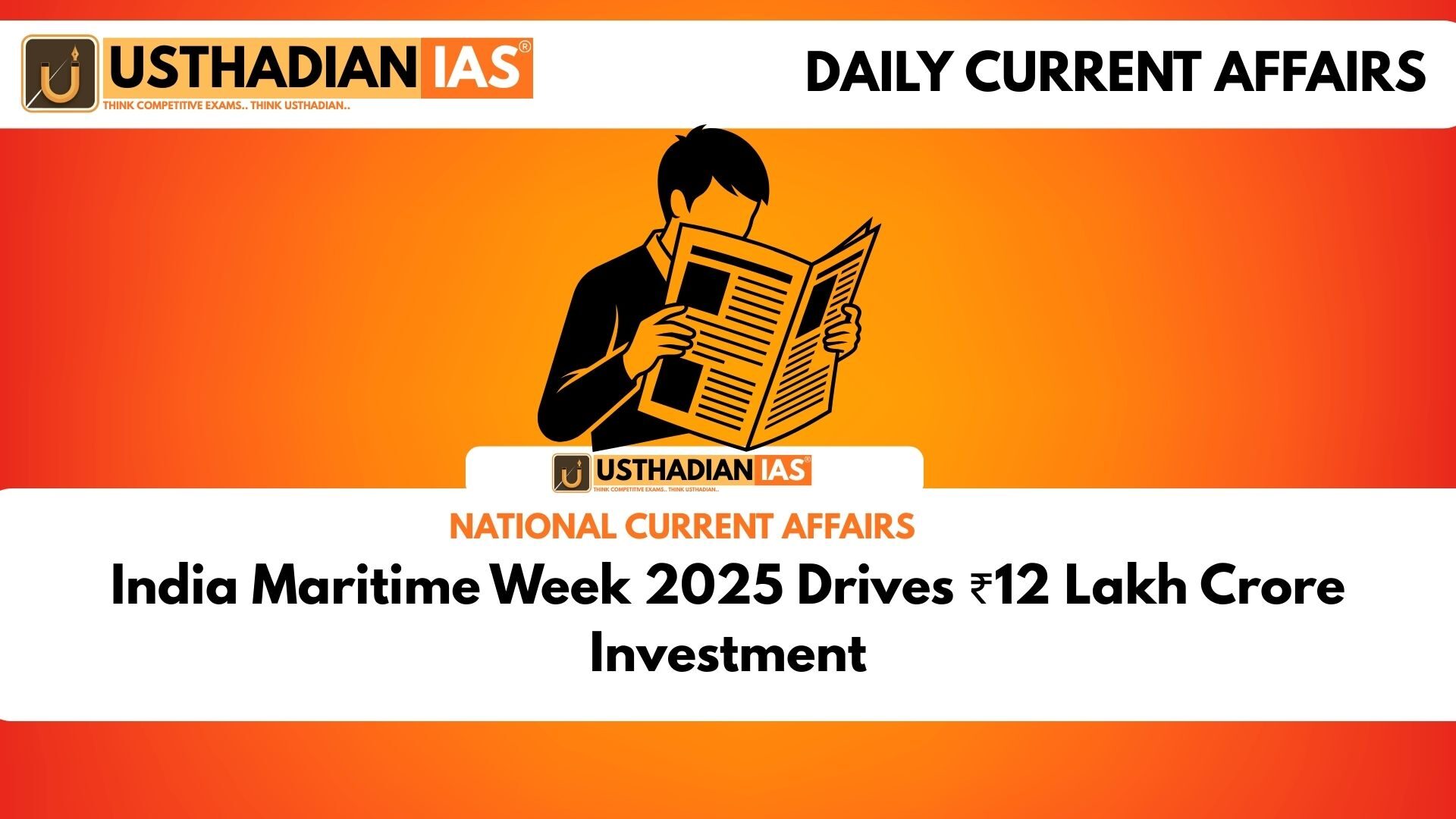Strengthening Maritime Leadership
India Maritime Week 2025 Drives ₹12 Lakh Crore Investment: India Maritime Week 2025 marked a major milestone in India’s maritime transformation, securing investments worth ₹12 lakh crore. This initiative aligns with the Maritime Amrit Kaal Vision 2047, which seeks to make India a global maritime leader. The event witnessed the unveiling of several indigenous projects to enhance shipbuilding, port infrastructure, and maritime connectivity.
Expanding Indigenous Shipbuilding
Under the indigenous shipbuilding mission, Oil and Gas PSUs launched 59 shipbuilding orders valued at ₹47,800 crore. The Shipping Corporation of India (SCI) announced an ambitious target of 216 vessels by 2047 with an investment of ₹1 lakh crore. These initiatives aim to promote self-reliance in ship production and reduce dependence on foreign fleets.
Static GK fact: The Shipping Corporation of India was established in 1961 and plays a pivotal role in India’s ocean trade.
Maritime Sector and Economic Growth
India’s maritime sector is central to its economic expansion. Nearly 95% of India’s trade by volume and 70% by value is conducted through sea routes. The port capacity has doubled to 2,762 million metric tonnes per annum (MMTPA) in 2024–2025, compared to about 1,400 MMTPA in 2014.
The average vessel turnaround time has been reduced from 93 hours (2014) to 48 hours (2025), positioning India as a competitive maritime hub.
Static GK Tip: The Ministry of Ports, Shipping and Waterways is the nodal authority for maritime administration in India.
Boost in Maritime Workforce
India’s seafarer workforce has surged from 1.25 lakh in 2014 to over 3 lakh in 2025, representing 12% of the global maritime workforce. This growth places India among the top three suppliers of trained seafarers worldwide. Training institutes under Directorate General of Shipping (DGS) have significantly contributed to this rise.
Legislative Reforms for Maritime Development
Several new laws such as the Merchant Shipping Act 2025, Coastal Shipping Act 2025, and Indian Ports Act 2025 have been enacted to strengthen the regulatory framework. These acts focus on port modernization, inland water transport, and sustainable practices.
Static GK fact: The Indian Ports Act was originally enacted in 1908, governing port operations before its modernization in 2025.
Vision for Future Maritime Growth
The Maritime India Vision 2030 identifies ten key themes including logistics efficiency, green ports, and digitalization. Its successor, the Maritime Amrit Kaal Vision 2047, targets over ₹70 lakh crore in total investments for shipbuilding, cruise tourism, and skill development.
Complementing this, the Sagarmala Programme aims to cut logistics costs and create employment opportunities through port-led development, while the Green Tug Programme plans to deploy 100 eco-friendly tugs by 2040.
Securing the Indian Ocean
India continues to strengthen its Maritime Security Framework through initiatives like MAHASAGAR, Act East Policy, and participation in the Indian Ocean Naval Symposium (IONS). These steps underline India’s commitment to a free, open, and inclusive Indo-Pacific region.
Static Usthadian Current Affairs Table
India Maritime Week 2025 Drives ₹12 Lakh Crore Investment:
| Topic | Detail |
| Investment Announced | ₹12 lakh crore during India Maritime Week 2025 |
| Key Vision | Maritime Amrit Kaal Vision 2047 |
| Shipbuilding Orders | 59 orders worth ₹47,800 crore |
| SCI Target | 216 vessels by 2047 |
| Trade Through Sea | 95% by volume, 70% by value |
| Port Capacity 2024–25 | 2,762 MMTPA |
| Seafarer Workforce 2025 | Over 3 lakh (12% of global) |
| New Maritime Acts | Merchant Shipping Act 2025, Coastal Shipping Act 2025, Indian Ports Act 2025 |
| Green Tug Programme | 100 eco-friendly tugs by 2040 |
| Maritime Security Framework | MAHASAGAR, Act East Policy, IONS |








